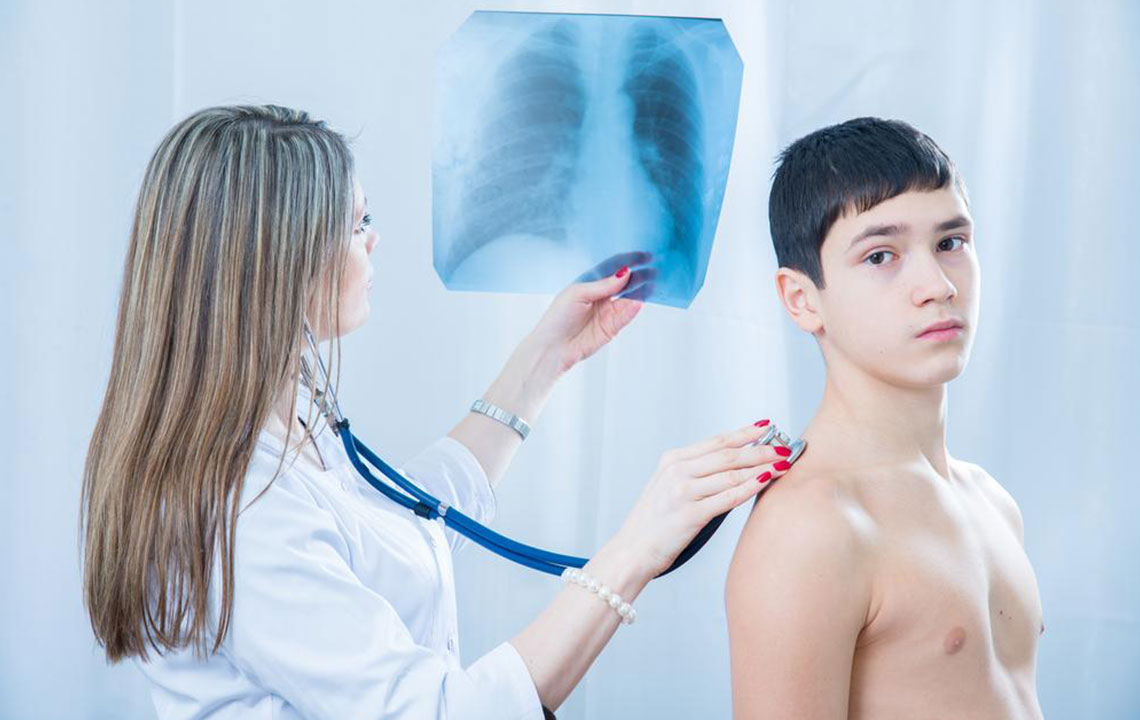Common Walking Pneumonia Symptoms in Children and Adults
Pneumonia is a common infection that inflames the air sacs in our lungs. It is caused by bacteria, fungi, viruses, chemical irritants, or even by food and other foreign objects if they are inhaled or enter the respiratory system. When the infection is mild and does not cause major damage to the lungs or respiratory system, it is called walking or atypical pneumonia. People with the infection typically feel well enough to work, walk, and carry on with their day.

Difference between typical and walking pneumonia
Regular or common pneumonia is also called typical pneumonia. The main differences between typical and walking/atypical pneumonia are based on:
Cause: Typical pneumonia is caused by influenza (flu) virus or rhinovirus, whereas walking pneumonia is caused by a bacteria called mycoplasma pneumoniae.
Treatment: People with regular pneumonia may require a stronger course of treatment and even hospitalization, which is not required for walking pneumonia patients who may only need rest and a mild form of treatment. Doctors advise resting and isolation for both to prevent the spread of infection to others.
Impact: Typical pneumonia could be a serious infection, and its symptoms can range from moderate to severe. It can cause short-term or permanent damage to the lungs and the respiratory system, whereas walking pneumonia does not cause any lasting damage to the body. Walking pneumonia symptoms are mild and easily treatable.
Walking pneumonia symptoms in children
Children affected are usually able to go to school and follow their daily routine, however, they may feel more tired than usual. Children may experience cold-like symptoms, including:
Cough with phlegm or dry cough
Croup
Fatigue and exhaustion without any strenuous activity
Headache
Lethargy
Low-grade fever
Sinus infection
Sore throat
Bronchitis and chest colds
Children with respiratory conditions or asthma may also experience wheezing as a walking pneumonia sign. The symptoms may appear within 1–4 weeks after being infected and can last for about 3–4 weeks.
Walking pneumonia symptoms in adults
An adult with walking pneumonia is contagious from the time of infection till the symptoms disappear. People can easily infect others if they do not shield their mouths while coughing or sneezing. The common walking pneumonia signs begin to show four weeks after exposure.
Pharyngitis
The pharynx is a hollow tube inside the neck that starts behind the nose and ends at the trachea and esophagus. The pharynx can get infected as well and can lead to a sore throat. Pharyngitis is not a disease itself and is usually a symptom of an infection.
Fatigue
Pneumonia causes inflammation of the airways and encourages mucus formation, making air circulation difficult. This can cause shortness of breath which leads to fatigue and tiredness.
Low-grade fever
The infection may cause a mild increase in body temperature anywhere between 99.6–100.3 degrees Fahrenheit. Treatment may not be required unless the temperature rises above this range.
Chest pain
The disease can sometimes lead to a buildup of fluid in the lungs. This can induce pain, heaviness, or a stabbing sensation in your chest. The discomfort can increase while coughing, breathing, or laughing.
Cough (dry or with mucus)
Coughing is a sign that the body is trying to get rid of fluid from the lungs. You could have a dry cough or mucus. It is better to let the mucus be released rather than suppress it using self-treatment or remedies. A doctor should be consulted if the cough lasts longer than two weeks.
Sneezing
Sneezing is a common walking pneumonia sign as it indicates that the body is actively trying to get the irritants out of our system. The infection is highly contagious, and most people are unaware that they are infected. So, a general recommendation would be to shield your mouth and nose while sneezing to avoid releasing pathogens in the air.
Headache
People may experience mild aches around their scalp, face, or upper part of the neck. The headaches can be accompanied by spells of coughing and sneezing.
Adults may experience one or more of the above-mentioned walking pneumonia symptoms, which are typically mild. Only a few may have a high body temperature or the presence of phlegm while coughing. Drinking plenty of fluids and water can help loosen the phlegm.
How is walking pneumonia diagnosed?
Doctors begin by asking about the symptoms and when did you first notice them and check if the overall description matches with common walking pneumonia signs. They also try to find out if anyone else in the family has been showing similar signs. They can first conduct a physical examination to check for infection or inflammation. Then they may also suggest chest X-rays and a series of blood and sputum examinations to confirm or rule out the infection.
Who is at risk?
Children under the age of 2, school-going kids, and adults over the age of 65 are more likely to contract the infection. The risk is even higher for people with preexisting issues like:
Asthma
Emphysema
Congestive obstructive pulmonary disease—a group of respiratory diseases
Weak immune system




